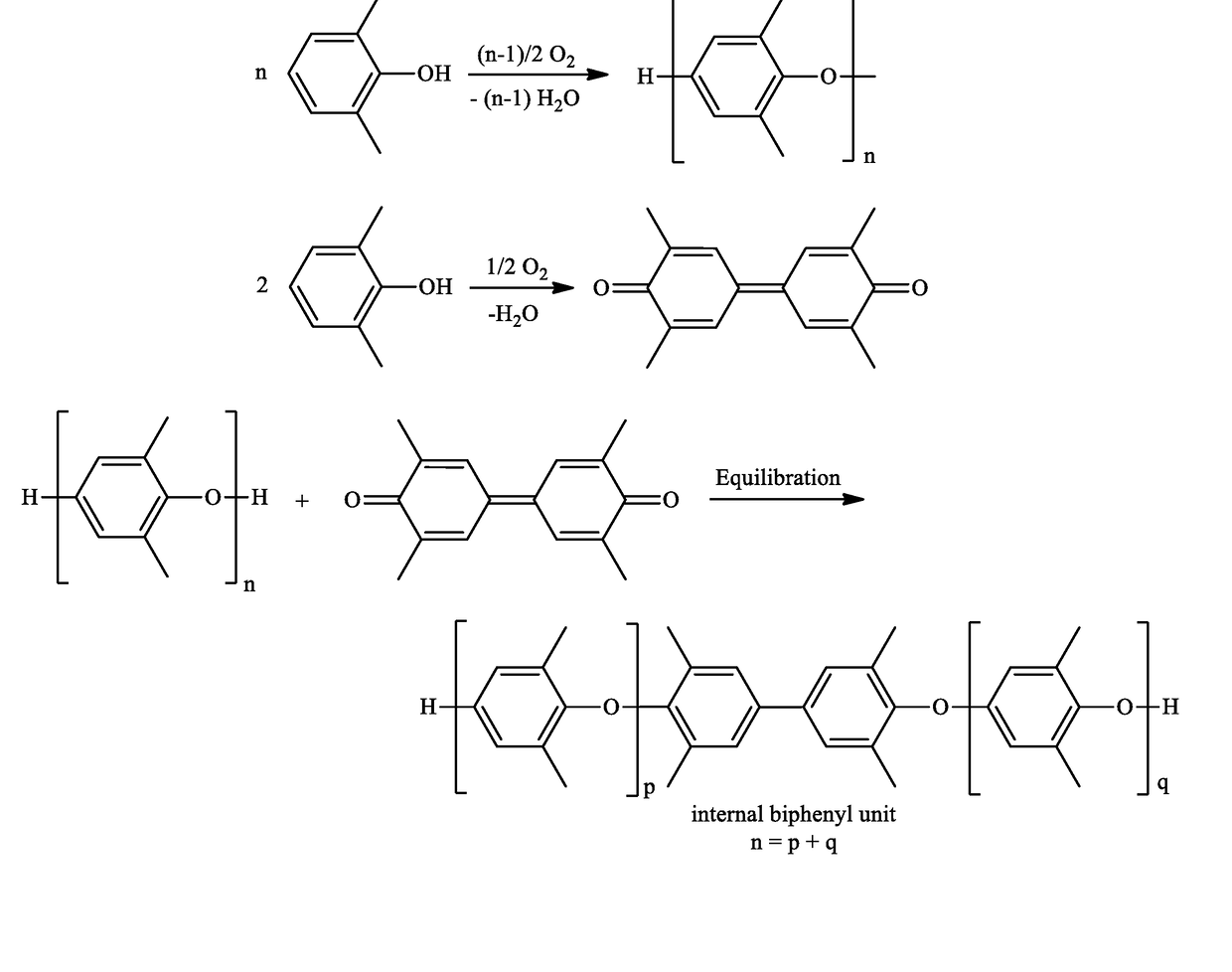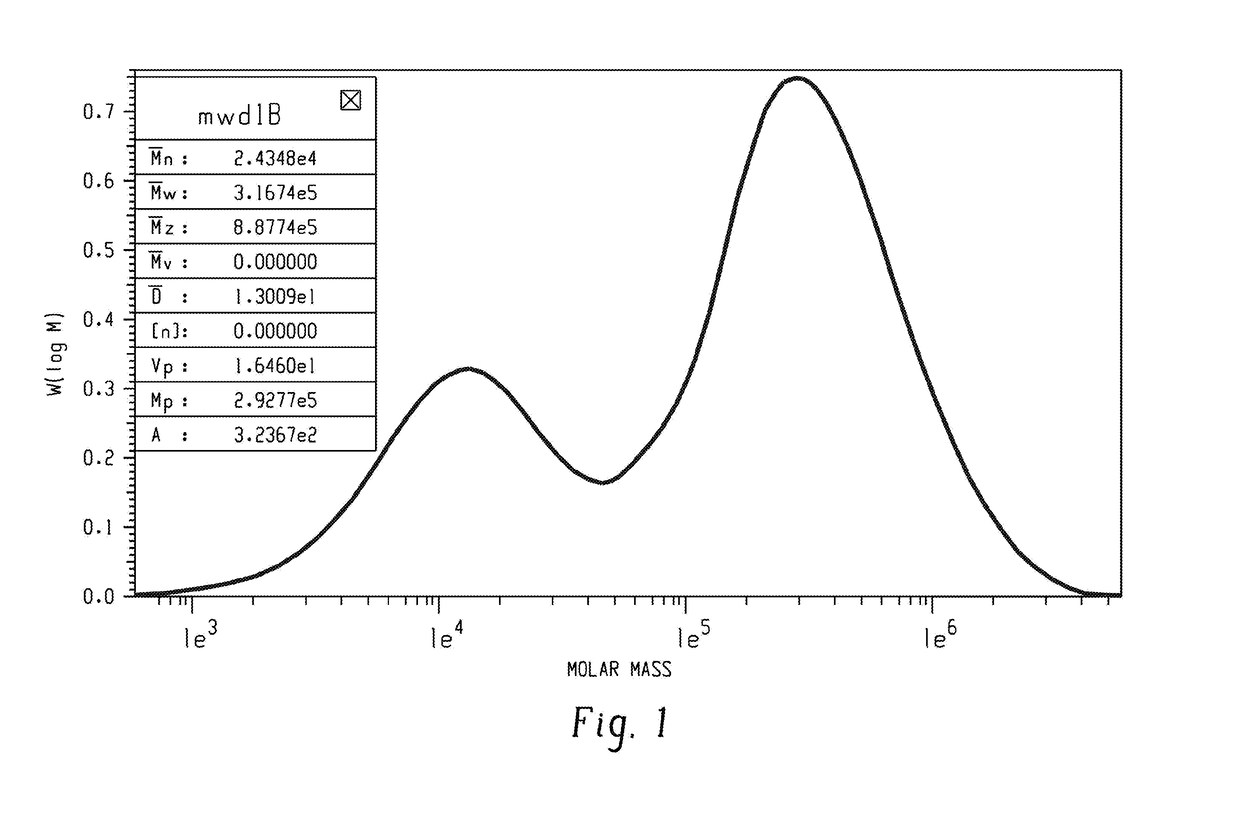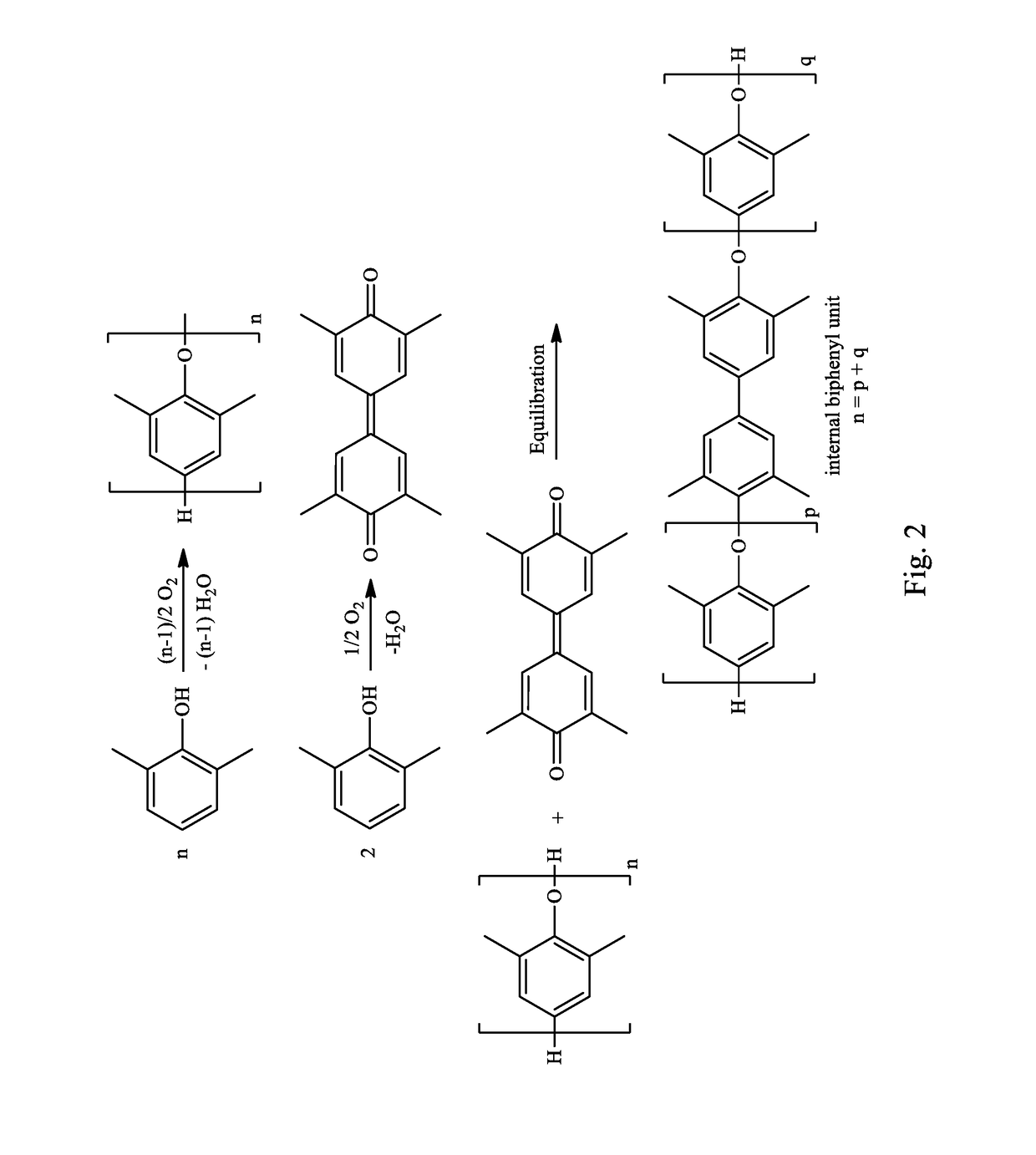Method for poly(phenylene ether) manufacture and associated poly(phenylene ether)
a technology of phenylene ether and polyethylene ether, which is applied in the field of poly (phenylene ether) manufacture and associated poly (phenylene ether), can solve the problems of high polydispersity, adversely affecting and achieves the effect of improving the physical properties and oxidative resistance of poly
- Summary
- Abstract
- Description
- Claims
- Application Information
AI Technical Summary
Benefits of technology
Problems solved by technology
Method used
Image
Examples
embodiment 1
[0033]A method of making a poly(phenylene ether) having an intrinsic viscosity of 0.5 to 2.0 deciliters per gram, measured in chloroform using an Ubbelohde capillary glass viscometer at 25° C., a polydispersity of 1 to 10, and a unimodal molecular weight distribution comprising: in an exotherm period, continuous addition of oxygen and a monohydric phenol of the structure:
wherein each occurrence of Z1 is independently halogen, unsubstituted or substituted C1-C12 hydrocarbyl provided that the hydrocarbyl group is not tertiary hydrocarbyl, C1-C12 hydrocarbylthio, C1-C12 hydrocarbyloxy, or C2-C12 halohydrocarbyloxy, wherein two to twelve carbon atoms separate the halogen and oxygen atoms; and each occurrence of Z2 is independently hydrogen, halogen, unsubstituted or substituted C1-C12 hydrocarbyl provided that the hydrocarbyl group is not tertiary hydrocarbyl, C1-C12 hydrocarbylthio, C1-C12 hydrocarbyloxy, or C2-C12 halohydrocarbyloxy, wherein two to twelve carbon atoms separate the hal...
embodiment 2
[0034]The method of embodiment 1, wherein the monohydric phenol is 2,6-dimethylphenol and the poly(phenylene ether) is poly(2,6-dimethyl-4-phenylene ether).
embodiment 3
[0035]The method of embodiment 1, wherein the monohydric phenol comprises a first monohydric phenol that is 2,6-dimethylphenol and a second monohydric phenol that is 2-methyl-6-phenylphenol or 2,6-diphenylphenol.
PUM
| Property | Measurement | Unit |
|---|---|---|
| Temperature | aaaaa | aaaaa |
| Temperature | aaaaa | aaaaa |
| Time | aaaaa | aaaaa |
Abstract
Description
Claims
Application Information
 Login to View More
Login to View More - R&D
- Intellectual Property
- Life Sciences
- Materials
- Tech Scout
- Unparalleled Data Quality
- Higher Quality Content
- 60% Fewer Hallucinations
Browse by: Latest US Patents, China's latest patents, Technical Efficacy Thesaurus, Application Domain, Technology Topic, Popular Technical Reports.
© 2025 PatSnap. All rights reserved.Legal|Privacy policy|Modern Slavery Act Transparency Statement|Sitemap|About US| Contact US: help@patsnap.com



